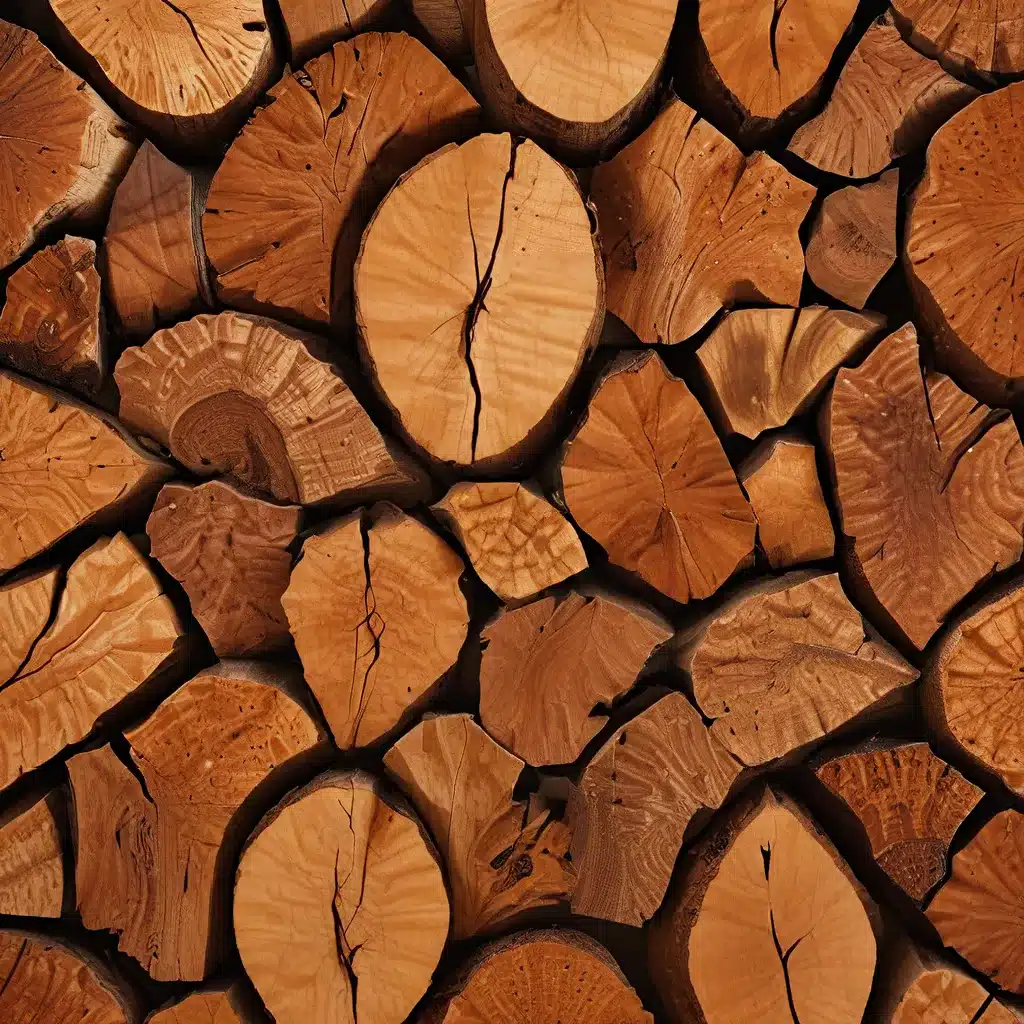
The Enigmatic Allure of Exotic Woods
As a self-proclaimed wood nerd, I’ve always been drawn to the captivating colors and grains of rare and exotic wood species. There’s just something mesmerizing about the way the warm, rich hues of padauk or the striking purple tones of purpleheart can transform a simple project into a true work of art. But as anyone who’s worked extensively with these remarkable materials will tell you, maintaining that natural beauty can be quite the challenge.
You see, I used to be one of those naive, delusionally-optimistic woodworkers who thought I could defy the laws of nature. I’d crank out amazingly colorful creations with exotic woods, fully convinced that those vibrant hues would last forever. Boy, was I in for a rude awakening. It didn’t take long for the reds, oranges, and purples to start fading, morphing into dull, lifeless shades of brown.
As the experts at Wood Database explain, every wood species has a “freshly-cut color” and a “settled-in color,” and more often than not, that settled-in hue is a far cry from the vibrant tones we woodworkers crave. It’s a frustrating reality, but one we have to accept – try as we might, we simply can’t stop the inevitable process of oxidation and color change.
Outsmarting Mother Nature
Or can we? While we may not be able to halt the aging process entirely, there are certainly strategies we can employ to slow it down and preserve those mesmerizing colors for as long as possible. It’s all about understanding the science behind wood discoloration and getting creative with our finishing techniques.
According to a seasoned Redditor and PhD Chemist, the key lies in using the right UV absorbers and light stabilizers. Compounds like hydroxybenzophenone and hindered amine light stabilizers (HALS) can actually trap the free radicals and reactive oxygen that cause wood to break down and change color under UV exposure. Think of it like a forcefield for your precious workpieces.
But that’s not the only trick up our sleeves. Studies have shown that a little red iron oxide coating can reduce the discoloration of exotic woods like padauk by up to 80%! So maybe we can’t stop the color change completely, but we can certainly slow it down to a crawl.
Of course, the effectiveness of these methods can vary depending on the wood species and the specific environmental conditions. But the overarching message is clear – with a little bit of science and a whole lot of determination, we can outsmart Mother Nature and preserve the vibrant beauty of our exotic creations.
Embracing the Inevitable
Now, I know what you’re thinking – why bother with all that fuss? Isn’t the whole point of working with rare woods to appreciate their natural evolution over time? And you know what? You’ve got a point.
As one Quora user eloquently put it, “Like a beautiful woman in her eighties, the beauty may have faded somewhat on the outside, but deep within she’s still gorgeous even if much of the beauty exists.” The same goes for our beloved exotic woods – sure, the colors might fade, but the stunning grain patterns and unique character will only become more captivating with age.
In fact, some woodworkers argue that the natural patina developed over time is part of the allure. They relish the opportunity to watch their creations evolve, cherishing each subtle shift in hue as a testament to the wood’s journey. And who are we to argue with that?
At the end of the day, whether you’re a staunch color preservationist or a passionate patina embracer, the true beauty of working with rare woods lies in their inherent uniqueness. No two pieces are ever exactly alike, and that’s what makes them so captivating. So why not sit back, relax, and enjoy the ride? After all, the only constant in the world of exotic woods is change.
Unlocking the Secrets of Rare Wood Species
Of course, to truly appreciate the wonders of these remarkable materials, we first need to understand them. That’s where resources like The Wood Database come in handy. This comprehensive online encyclopedia is a veritable goldmine of information on everything from wood hardness and density to color characteristics and working properties.
Want to know why purpleheart darkens over time, or how to keep your padauk from fading? The Wood Database has got you covered. Curious about the elusive “figured” grains in woods like curly maple or birdseye? Dive into their detailed articles and you’ll be a wood nerd in no time.
And let’s not forget about the wealth of hands-on knowledge shared by the woodworking community. The r/woodworking subreddit is a treasure trove of tips, tricks, and personal experiences from seasoned pros and passionate hobbyists alike. Whether you’re struggling with a tricky finishing technique or simply want to admire some awe-inspiring projects, this online hub is the place to be.
So why not join us on this journey of woodworking wonder? Grab your tools, fire up your creativity, and let’s dive headfirst into the extraordinary world of rare and exotic wood species. Who knows what magical creations you might conjure up – the possibilities are as limitless as the woods themselves.








